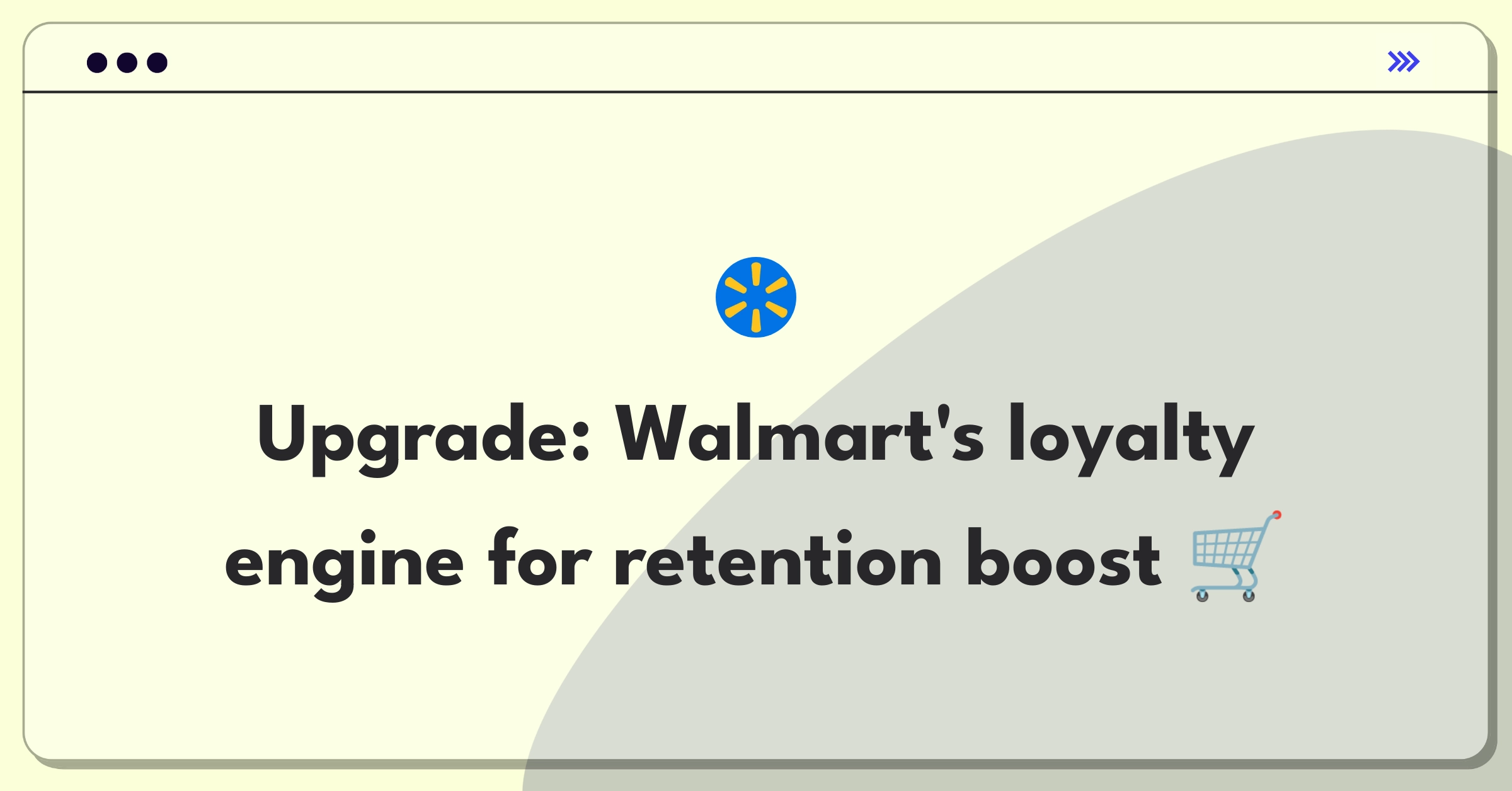Certainly, I'll address the question about designing a loyalty program for Walmart as a product manager, using the structure and guidelines you've provided. I'll present this as if I'm directly addressing the interviewer in a product leadership interview.
Introduction
As a product manager at Walmart, designing an effective loyalty program is crucial for driving customer retention, increasing purchase frequency, and ultimately boosting revenue. I'll outline a comprehensive approach to create a loyalty program that aligns with Walmart's business objectives and enhances customer value.
Clarifying Questions
Why it matters: This impacts the scope and complexity of the program design. Expected answer: Yes, a company-wide program. Impact on approach: We'll need to consider cross-category incentives and a unified point system.
Why it matters: This helps prioritize short-term vs. long-term strategies. Expected answer: Increase customer retention by 15% and average basket size by 10% within the first year. Impact on approach: We'll focus on quick wins for immediate impact while building long-term loyalty.
Why it matters: This information is crucial for segmentation and personalization. Expected answer: Yes, we have extensive data from our point-of-sale and e-commerce platforms. Impact on approach: We'll leverage data-driven insights for targeted rewards and communications.
Why it matters: This affects the feasibility and timeline of implementing certain features. Expected answer: Our current POS system needs an upgrade to support real-time point tracking. Impact on approach: We may need to phase the rollout or prioritize certain features based on technical capabilities.
Tip
I'll take a moment to organize my thoughts before proceeding with the detailed strategy.
Step 1
Diagnose the Current Growth Problem
To design an effective loyalty program, we need to understand Walmart's current growth challenges:
-
Customer Retention: While Walmart has a vast customer base, retaining price-sensitive shoppers who might switch to competitors for better deals is a challenge.
-
Purchase Frequency: Increasing the number of visits per customer, especially for non-grocery items, presents an opportunity for growth.
-
Average Basket Size: There's potential to increase the average transaction value by encouraging customers to explore more categories.
-
E-commerce Integration: With the growing importance of online shopping, seamlessly integrating the loyalty program across both physical and digital channels is crucial.
-
Data Utilization: Walmart collects extensive customer data, but may not be fully leveraging it for personalized marketing and targeted offers.
Subscribe to access the full answer
Monthly Plan
The perfect plan for PMs who are in the final leg of their interview preparation
$99 /month
- Access to 8,000+ PM Questions
- 10 AI resume reviews credits
- Access to company guides
- Basic email support
- Access to community Q&A
Yearly Plan
The ultimate plan for aspiring PMs, SPMs and those preparing for big-tech
$99 $33 /month
- Everything in monthly plan
- Priority queue for AI resume review
- Monthly/Weekly newsletters
- Access to premium features
- Priority response to requested question


.png)